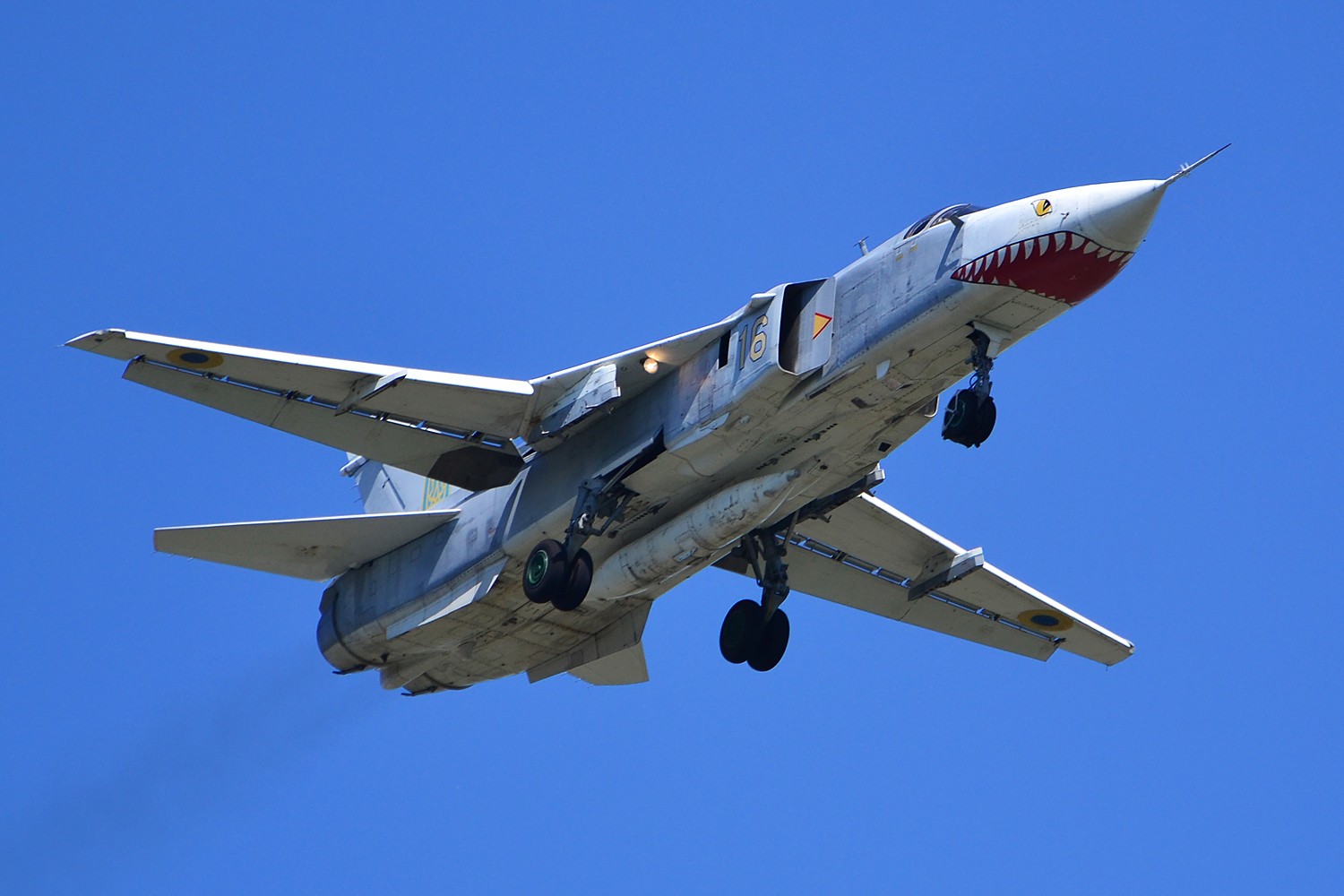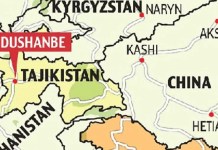On July 19, 2023, Ukraine unambiguously crossed a Russian redline by attacking Crimea with Storm Shadow missiles. Russia retaliated on July 24, 2023, hitting a Ukrainian port on the Danube within kissing distance of Romania, a NATO country.
My analysis for The EurAsian Times posted on July 26, 2023, concluded that Russia might continue attacking logistics supply lines from the West at their point of entry into Ukraine, unmindful of the proximity of NATO borders.
As predicted, on July 26, Russia launched an unprecedented daytime heavy missile attack on Ukraine with many missiles headed toward Western Ukraine.
According to the Ukrainian Air Force, at 1700 hrs on July 26, eight RuAF Tu-95MS strategic bombers launched 36 X-101 / X-555 cruise missiles from over the Caspian Sea. At around 1900 hrs, RuAF MiG-31K fighters launched an unspecified number of Kinzhal hypersonic aeroballistic missiles.
Russian missiles struck several important targets, including Starokonstantinov airbase and Zmiinyi island.
Strike On Su-24MR Airbase
Russia struck the Starokonstantinov airbase in the Khmelnytsky region with cruise missiles and Kinzhal hypersonic missiles. The base is home to the 7th Tactical Aviation Brigade flying Sukhoi Su-24 M, Sukhoi Su-24 MR, and Aero L-39C Albatros aircraft.
The Su-24 MR is the launch platform for British Storm Shadow missiles that have struck Crimea four times since July 19, 2023.
Russia had earlier struck the Starokonstantinov airbase on May 29, 2023, using “long-range air-based high-precision weaponry,” according to the RuMoD.
“The goal of the attack has been reached. All the assigned targets have been neutralized.”
They report an attack on the Starokonstantinov airfield in the Khmelnytsky region.
According to Ukrainian monitoring channels, at least three arrivals were recorded in the area of the military airfield. It is known that Su-24MR aircraft of the 7th tactical aviation brigade of… pic.twitter.com/P3HzwhC96t
— Koba (@Roberto05246129) July 26, 2023
“As a result of the strike, the AFU command posts and radar stations, as well as aircraft and ammunition depots, have been hit.”
The Russian strike had led to a noticeable reduction in Ukrainian Storm Shadow launches.
RuAF’s use of the very destructive Kinzhal hypersonic aero ballistic missiles to strike the base suggests that underground/hardened facilities on the airbase were hit. The targets were likely Su-24MR fighters in hardened shelters or underground Storm Shadow support and support facilities, possibly with British personnel.
Attack On Snake Island
In addition, Russian aviation successfully struck AFU military infrastructure on Zmiinyi (Snake) Island with FAB-500M-62 bombs equipped with correction and planning modules.
Explosions were also heard in the Dnepropetrovsk, Kyiv, and Zhytomyr regions. Because of the strict censorship within Ukraine, it’s difficult to assess the damage resulting from Russian missile strikes.
Strike On Port Infrastructure
In its operational summary for July 26, the Russian MoD stated, “The Russian Armed Forces delivered concentrated strikes with precision-guided weapons at airfields, command and control centers and deployment of the Armed Forces of Ukraine, assembly shops and storage sites for unmanned boats, as well as missiles, weapons and military equipment received from Europe and the United States.”
Early morning on July 27, according to the Ukrainian Air Force, Russia launched two Kalibr cruise missiles from a submarine in the Black Sea and eight Geran-2 kamikaze drones from Primorsko-Akhtarsk.
Ukraine claims to have shot down both the Kalibr missiles aimed at the Odesa region’s port infrastructure. It also claims to have successfully engaged the Geran-2 drones at the borders of the Khmelnytsky, Dnipropetrovsk, and Donetsk regions.
However, Ukraine’s operational command “South” contradicted the UAF claim about the Kalibr, admitting that the port infrastructure of the Odesa region was hit. Port administrative buildings and production equipment of one of the cargo terminals were reportedly damaged.
Russia claims its attacks on Ukrainian port structures are not indiscreet. They target production workshops and storage sites involved in developing and manufacturing maritime kamikaze drones that frequently attack Russian shipping and harbor facilities.
Russian sources report that the Geran-2 drones hit a production facility for Ukrainian kamikaze drones, including fixed-wing drones used to attack Crimea, located in the industrial zone on the southern outskirts of the Pervomaisky settlement in the Kharkiv region. The city’s mayor, Nikolai Baksheev, reportedly confirmed the Russian Geran strike.
Analysis & Conclusion
On the night of July 26, 2023, Ukrainian forces renewed their counteroffensive, which started on June 4 but ground to a halt (euphemistically referred to as an operational pause) a month later, having failed to make any substantive headway.
Ukraine coordinated the restart of its counteroffensive with week-long strikes on Crimea using drones and British-supplied Storm Shadow missiles.

The limited duration of the Ukrainian drone/missile onslaught on Crimea and its limited damage suggests that the onslaught was intended to boost the morale of Ukrainian troops before relaunching the counteroffensive. It’s unlikely to have been aimed at significantly weakening Russian resolve or defenses.
As discussed in our analysis posted yesterday, the Ukrainian use of Storm Shadow missiles to attack Crimea violated a Russian redline since Moscow considers Crimea an integral part of Russia, not a Ukrainian region that subsequently voted to switch allegiance to Russia.
Russia’s retaliatory strikes on Ukraine’s Reni port on the Danube, in very close proximity to Romania, violated a NATO redline.
Both sides – NATO and Russia – have decided to take greater risks than before to achieve their respective goals. As a result, the nature of the Ukrainian war will change to adapt to changing posture. Russia is likely to leverage its air and naval superiority more aggressively over Ukraine.
Russia’s use of a submarine to strike Odesa port structures on July 26 morning is a case in point. The time available to Ukraine to respond to the launch of a cruise missile in close proximity to its shore rules out any effective defense.
The Russian attack on Snake Island is also a pointer. Such attacks on Snake Island are likely to intensify for the following reasons:
With the termination of the UN-sponsored grain export agreement, Russia is under no obligation to refrain from striking the island. The island is a militarily useful vantage point for monitoring and controlling shipping activity close to Odesa port.
Russia now has FAB-500M62 guided bombs in play.
When Russia last occupied the island and then ceded control, it didn’t have an inexpensive but accurate and powerful air-launched weapon to strike at the Ukrainian forces occupying the island. That has changed with the easy availability of the FAB-500M62.
Russian forces are unlikely to occupy the island close to the Ukrainian mainland to minimize their vulnerability. They will likely force Ukrainian forces to evacuate and stay away from the island.
- Vijainder K Thakur is a retired IAF Jaguar pilot. He is also an author, software architect, entrepreneur, and military analyst. VIEWS PERSONAL
- Follow the author @vkthakur




